How to Go On Safari Without Feeling Like a Bad Person
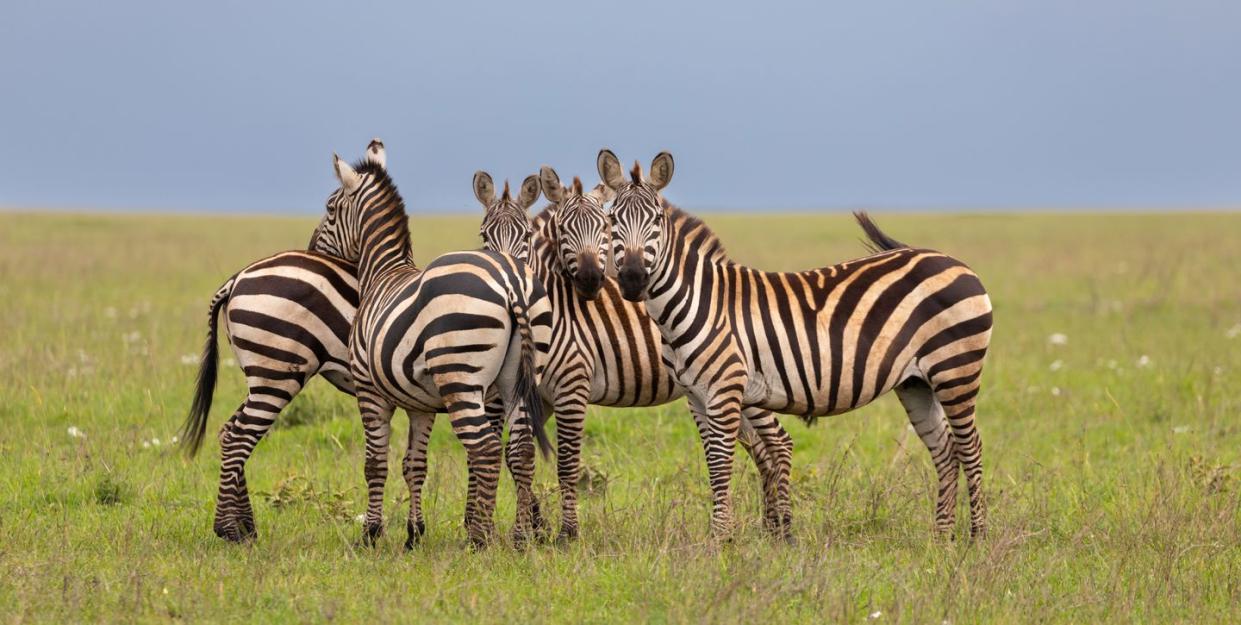
With the world slowly reopening, the question is not “When will we be able to travel again?” but “What is the right way to do so?”
After languishing through two-plus years of pandemic life with my husband and three young kids, I was eager to get back out there. My career as a writer and photographer has always centered on the idea of traveling in more responsible and immersive ways. So as travel restrictions lifted and tour companies sought to restart operations, I was curious to figure out if it was possible to go on safari—a trip on many Americans’ bucket lists—in a way that would help to sustain the animals and their habitats rather than harm and deplete them.
Read on for experiences in:
RWANDA TANZANIA UGANDA
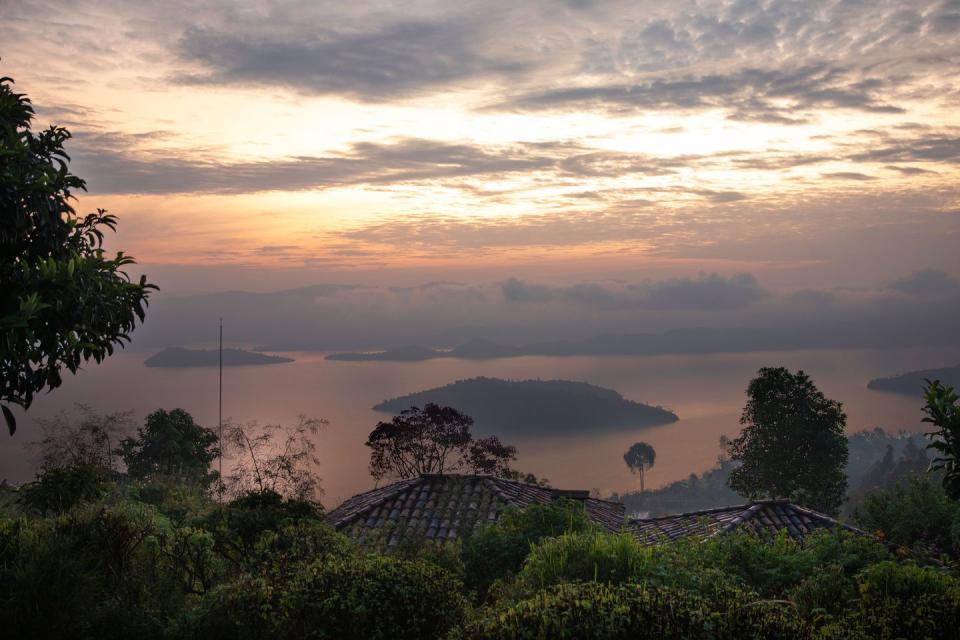
RWANDA
CLOSE ENCOUNTER
In the lush hills of Volcanoes National Park, visitors come face-to-face with majestic gorillas—and then learn how to protect their home.
“The gorillas are allowing us to be here,” whispers Emmanuel Harerimana, my machete-wielding guide. “They’ll let us know if we’re not welcome.” We had just finished trekking up the steep rise of Mount Sabyinyo, one of eight main summits that make up the Virunga Mountains, a chain of dormant volcanoes in East-Central Africa and home to Rwanda’s Volcanoes National Park. I’ve come here to visit one of four remaining mountain gorilla habitats in the world. As their name suggests, these critically endangered great apes, a subspecies of the eastern gorilla, live at an altitude between 8,000 and 13,000 feet. After bushwhacking through the thick rain forest, dodging fire ants and stinging nettles as we climbed, we made it up to where the Agashya mountain gorilla family was having breakfast.
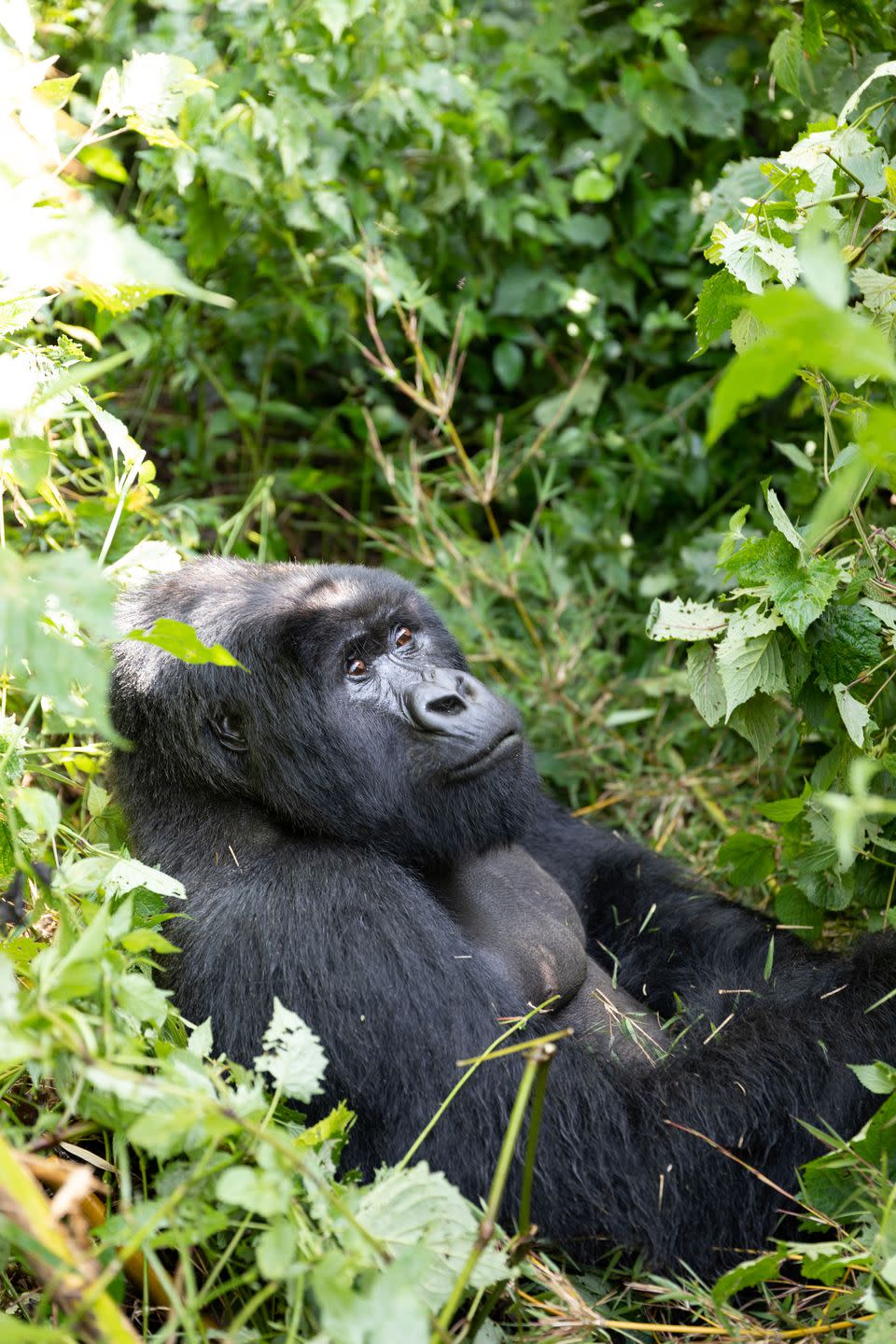
We heard them before we saw them: the snap of bamboo, the rustle of foliage, the occasional grunt. Harerimana let out a hoarse “maaa” sound, mimicking a gorilla’s hello. A massive silverback reciprocated, inviting us to come closer.
Nothing can prepare you for a gorilla encounter: Their facial expressions are startlingly human, clear evidence of the 98 percent DNA we share, and in the time we had together, I saw family dynamics that echoed my own. There were siblings wrestling and teasing one another, an exhausted-looking mother trying to find a quiet spot to enjoy a meal, and the patriarch sitting with arms crossed, expressing very little patience for the younguns’ antics.
This was exactly the type of experience I’d hoped for as I packed my bags for this pinch-me, is-this-really-my-life kind of trip. I had been invited here by Go2Africa, a Cape Town–based safari operator, in its push to get tourists back to Rwanda and elsewhere in the region now that pandemic restrictions are lifting.
The pandemic decimated Africa’s $39 billion tourism industry. In Rwanda alone, tourism revenues fell from nearly $500 million in 2019 to $121 million in 2020. But this is hardly the first time the country has had to start again. In 1994, over the period of 100 days, an estimated one million people (overwhelmingly Tutsi) were killed by Hutus in a brutal genocide. Just three years after the devastation, in 1997, Volcanoes Safaris was the first international outfitter to offer mountain gorilla trekking in Rwanda. Since then, a thriving tourism industry has sprung up around the great apes, bringing significant and much-needed revenue to the area, especially the communities living around Volcanoes National Park. “We’re honored to have been part of the process of stabilizing the region and connecting it to the world,” says Volcanoes Safaris founder and CEO Praveen Moman. Permits to visit the gorillas aren’t cheap (in Rwanda, they run about $1,500 for foreigners), and a portion of the proceeds goes toward protecting and expanding the gorillas’ habitat. In 2021, Rwanda’s government announced plans to expand Volcanoes National Park by nearly 9,300 acres to accommodate the growing gorilla population.
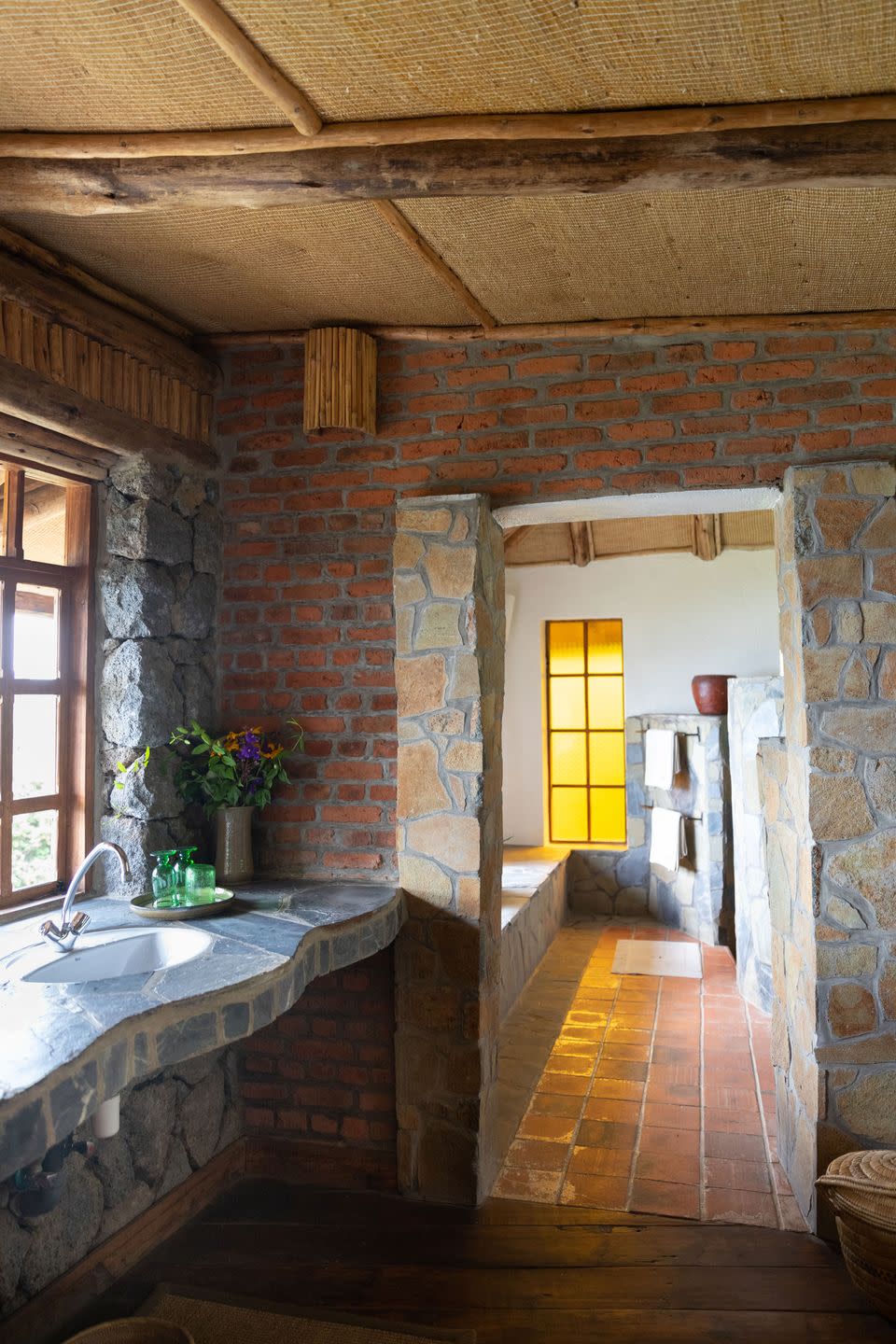
The day after my gorilla trek, I visited the brand-new Ellen DeGeneres Campus of the Dian Fossey Gorilla Fund. The Fossey Fund has worked to protect and monitor wild gorillas and their habitats, and train the next generation of African conservationists, since its founding in 1967. The plight of these endangered apes gained international attention thanks to the late famed primatologist, who made her home, known as the Karisoke Research Center, here in Volcanoes National Park. I hoped that my campus visit would provide deeper context to my recent great ape encounter. “If we can get a traveler to take a safari or gorilla trek, but also expose them to the conservation work that allows for those experiences, we can create activists who can pay it forward for the next generation of travelers,” says Maija de Rijk-Uys, managing director of Go2Africa, which has partnered with the Fossey Fund to offer immersive tours of the new campus.
The campus’s gallery is full of interactive exhibits that bring Fossey’s story to life, while also providing in-depth information about the mountain gorillas, including their closely bonded social structure, their different personalities, and the many threats they face. The tour ends on a hopeful note, by encouraging visitors to take real action to support the work of the fund, which supports the gorillas, who in return help support…all of us. “The forest is critical to our survival,” says Dian Fossey Gorilla Fund President and CEO and Chief Scientific Officer Tara Stoinski, PhD. “Gorillas are the gardeners of the second-largest tropical rain forest left on earth, and thus they are one of our best natural defenses against climate change.”
The mountain gorillas have also become one of Africa’s greatest success stories: In 1967, there were less than 300; today, their population stands at more than 1,000. But in a rapidly warming world with increasing population pressures, and the continuous threat of disease, poaching, and habitat encroachment, it’s a precarious success that requires constant vigilance and financial support. As one of the exhibits at the Ellen DeGeneres Campus puts it, “Humans are gorillas’ greatest threat, and their biggest hope.” Even tourists.
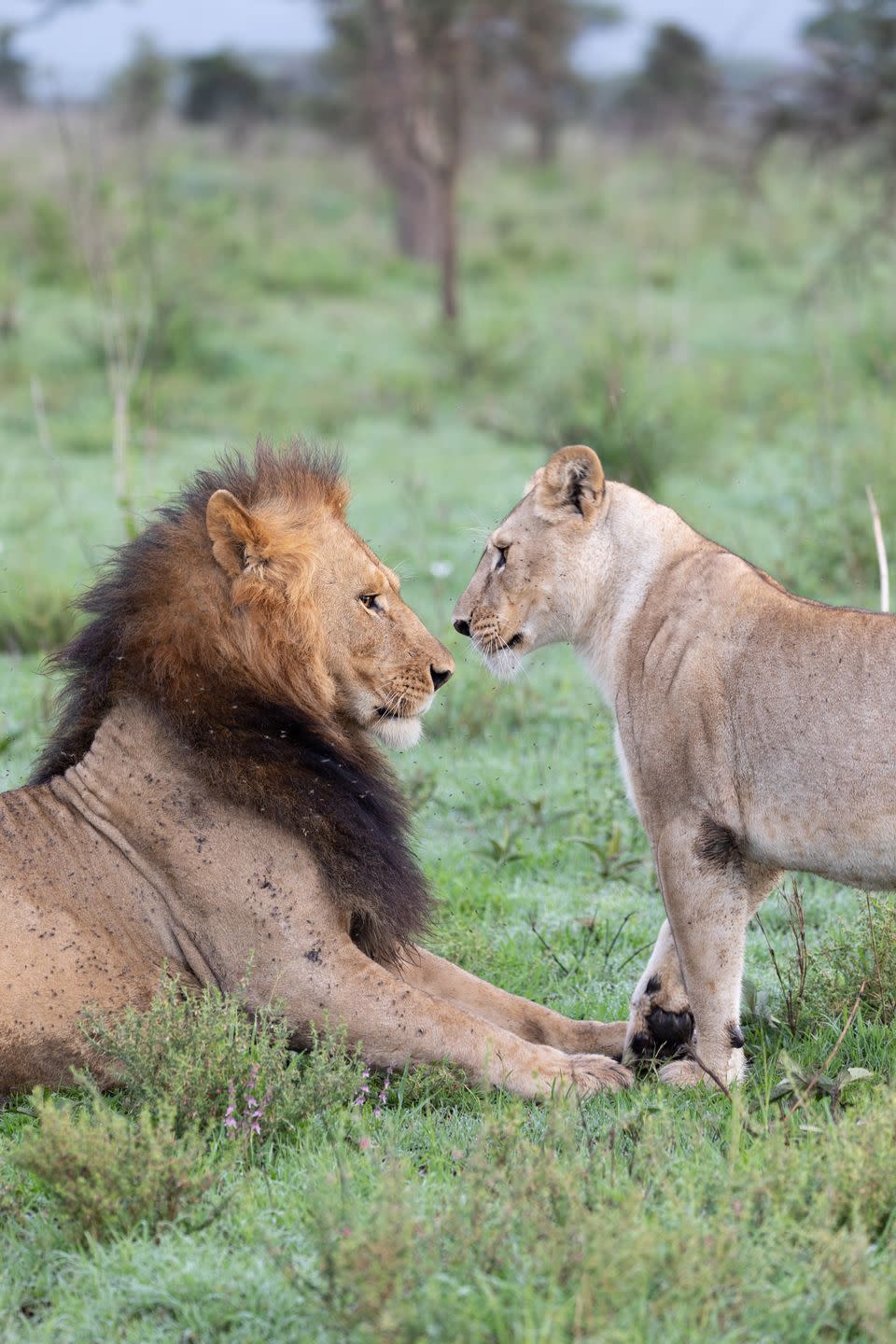
TANZANIA
Forces of Nature
In the heart of the Serengeti, an all-female-run safari camp proves that the big-game business isn’t just for the boys.
The sound of torrential rain woke me at 3 a.m. Perhaps it was the jet lag, or the occasional snorts coming from just outside my canvas tent. Tucked safely inside my mosquito netting, from the comfort of my bed, I watched the night’s thunderstorm give way to a watercolor sunrise. Golden rays illuminated the soaked grasslands, lush and verdant during this rainy season. The throaty roar of a nearby lion startled me out of my reverie. It was safari time.

I had arrived at Dunia Camp in Tanzania’s central Serengeti the previous evening. Getting there takes most of a day, requiring a two-hour flight from the nearest city to a desolate airstrip in the middle of the Serengeti, followed by an hour-long drive through the savanna. After checking in, I was surprised to find I was the lone guest. The secluded situation could have felt dicey, save for the fact that Dunia is entirely women-run—the only camp of its kind on the continent. In the six years since Dunia’s all-female team was established, it has inspired a wave of change across the industry and continent, including the creation of government-run all-female ranger units. “Working and living here together, it’s a sisterhood,” says Siyaeli Moshi, Dunia’s manager, of her staff of 27, who are all Tanzanian. “We feel comfortable with each other, and that sense of comfort translates to our guests.”
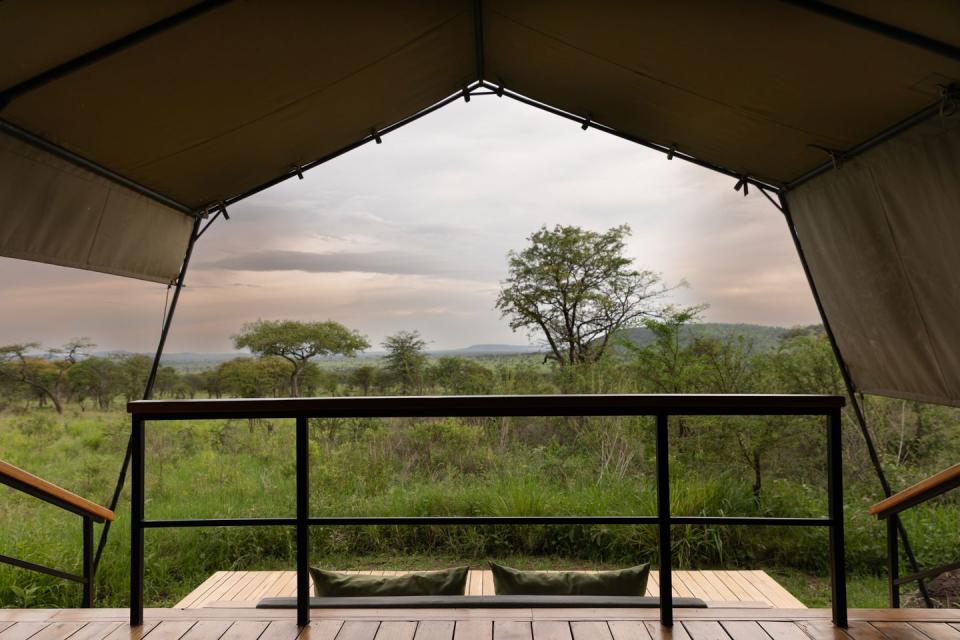
Safari culture, which has its roots in big game hunting, has historically been soaked in machismo. I liked that coming here meant I was helping women get a slice of the tourism industry, one of the most profitable sectors in the country. Because, of course, it takes the ongoing support of tourists to sustain the camp’s success. “[Travelers] are in a position to dictate where their tourism dollars go in Africa,” says Maija de Rijk-Uys, managing director of Go2Africa, a safari tour operator with 24 years of experience (Go2Africa.com). Close to 60 percent of its bookings are made by women. “They can really make an impact if they’re [informed as] to where their dollar is most needed and who it’s helping.”
At first light, my unflappable safari guide, Lailatu Kivuyo, greeted me with the promise of big game encounters. “Did you hear the lions?” she asked with a grin, her energy contagious. “They’re waiting for us.” She explained that Dunia is ideally located for exploring the Serengeti’s diverse landscape due to its proximity to the Seronera River, a known gathering place for big predators, and the Moru Kopjes, a cluster of old granite boulders favored by big cats. Twice per year, you don’t even have to leave camp to see the Great Migration—millions of wildebeests, zebras, and gazelles pass right through.
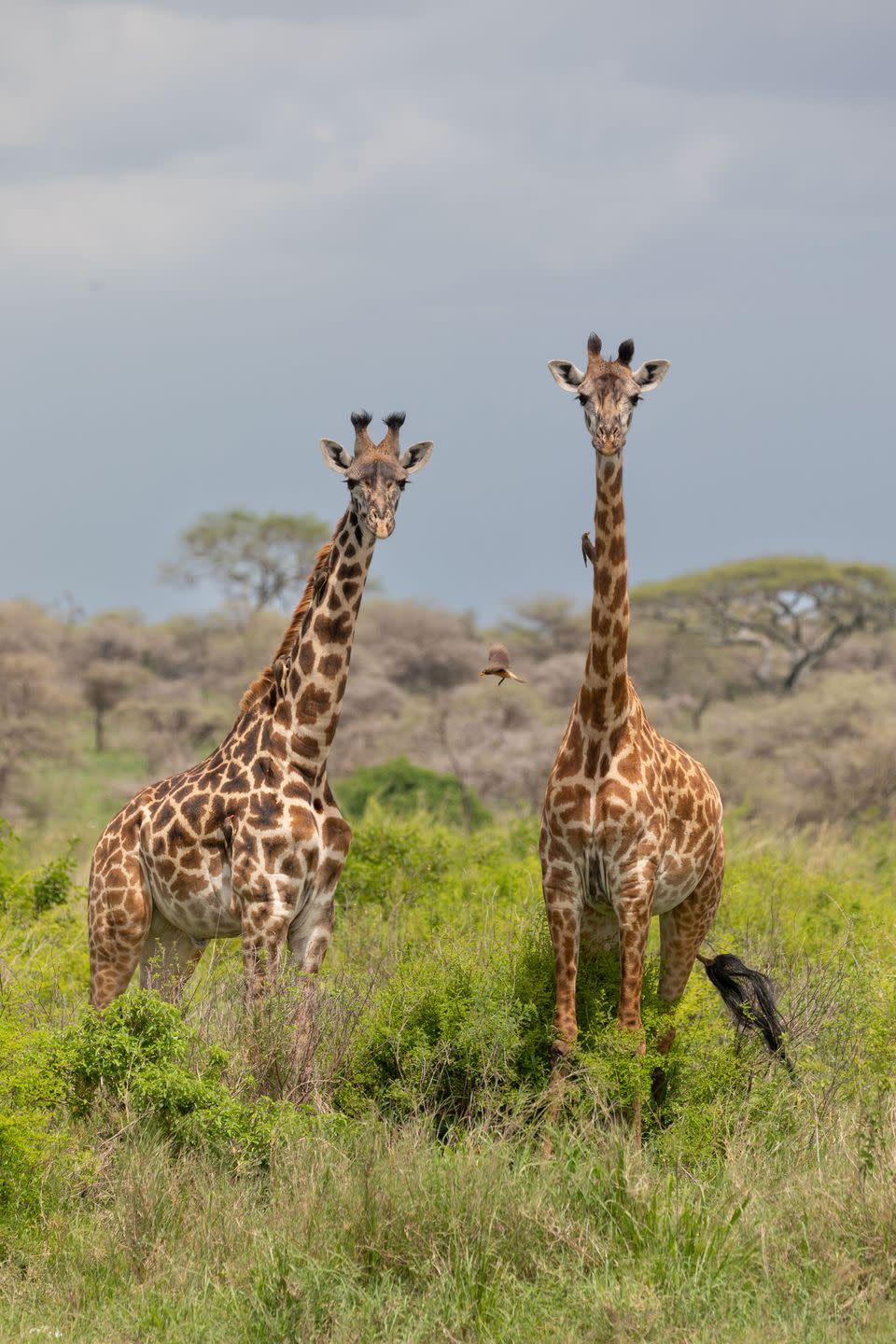
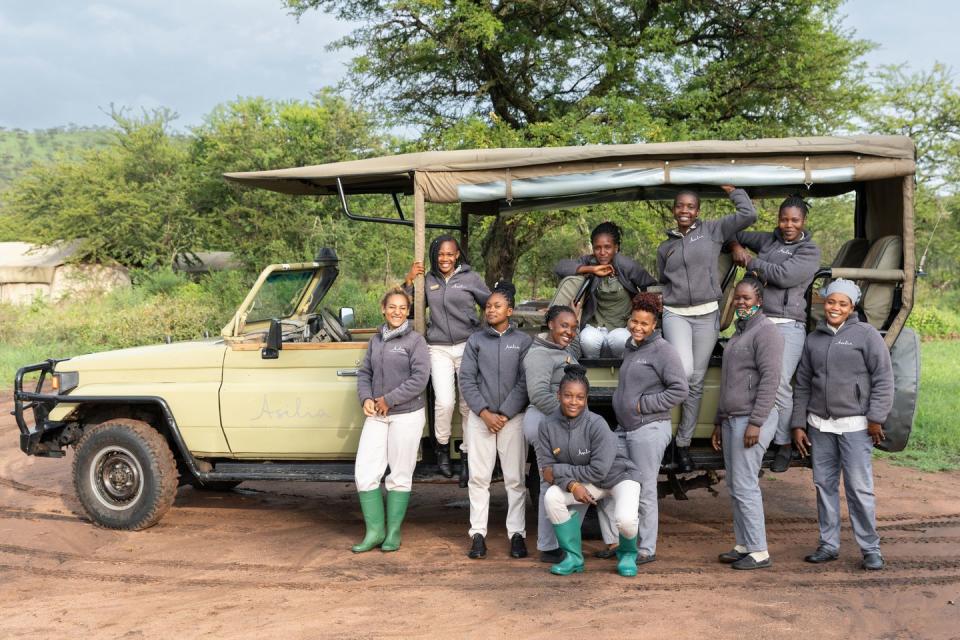
Our game drive would be an all-day affair. I had assumed wildlife encounters would be easy to come by on safari, but I quickly learned it takes serious skill to facilitate the rare, up-close moments. Kivuyo awed me with her razor-sharp vision. Somehow she could navigate cratered dirt roads while spotting lions hiding in the trees and cheetahs streaking across the grassland far ahead. As the Serengeti has grown in popularity among tourists, it’s not uncommon to find dozens of jeeps crammed together around the same animal. But the right guide can make all the difference. Around one bend, we spotted an elegant tower of giraffes; in the short grass of the plains, a lazy pride of lions let us pull up right alongside them. We even found one lone bull elephant swishing through the savanna in an attempt to find shade from the scorching midday sun. My list of wildlife encounters grew from there to include leopards, servals, waterbucks, wildebeests, zebras, crocodiles, hippos, and even an elusive, critically endangered black rhino.
We paused for breakfast under the shade of an umbrella acacia tree, and Kivuyo whipped out an array of stainless steel containers brimming with food. Not once did I see a piece of plastic, just a small reminder of the many ways Asilia Africa—one of East Africa’s long-standing safari companies and Dunia’s owner—has committed to sustainability. Over steaming cups of coffee, I asked Kivuyo how she came to be a guide. “A team from Asilia came to Sambwa, the small village where I grew up,” she said. “They were there to support clean water initiatives, and I heard mention of a scholarship for those interested in tourism.” Most of her peers had finished secondary school and quickly married, but Kivuyo had professional aspirations. She landed the competitive scholarship to attend tourism school, and began working at Asilia-owned camps after that, first as a waitress and eventually working her way up to staff cook.
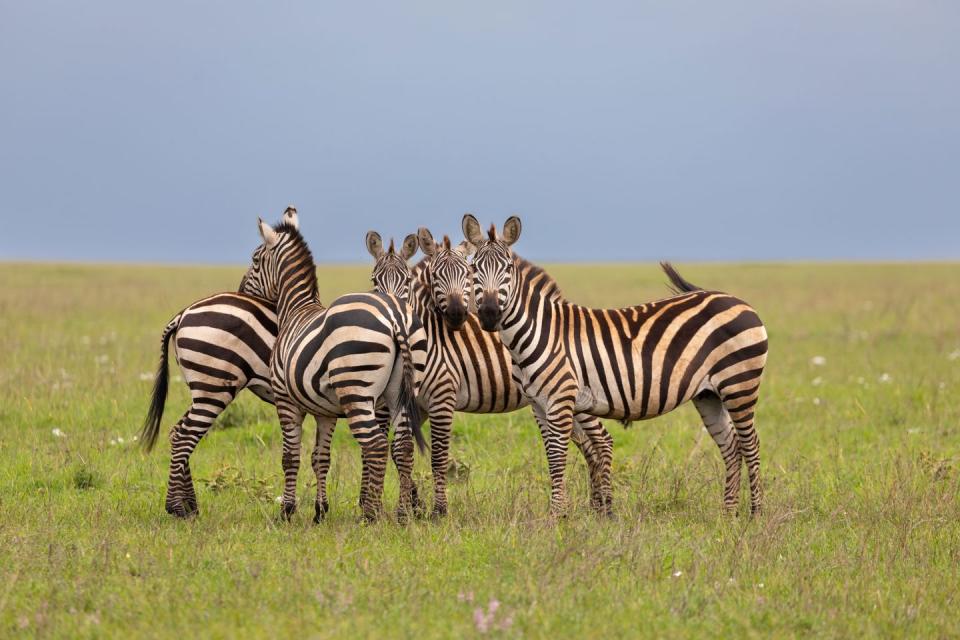
She had her sights set on guiding, though. “It’s not easy. You have to prove yourself,” Kivuyo says. “Luckily, I love a challenge.” Every year, around 500 hopefuls attend Asilia’s three-day guide tryout in the city of Arusha; a guiding job not only comes with prestige, but wages enough to support an entire family. At the end of the selection process, just 15 to 20 candidates are chosen to begin the monthlong guiding foundation course. Of those, only about half make it to the trainee phase. Kivuyo, whose first name translates in Arabic to “brightest star in the darkest night,” is a shining example for the girls in her village, having beat out the steep competition to achieve guide status while still in her twenties.
On the evening of my last game drive, we were hours away from camp when lightning flashed across the darkening savanna. Then the rain came, gusting in sheets and washing out the rough dirt road. The wheels of our Land Cruiser spun fruitlessly as we sank into the slick mud. It would have been easy to panic. We were deep in the Serengeti, with spotty radio service, and thanks to all our wildlife sightings, I knew exactly what was out there skulking through the grasses and rivers surrounding us. Yet I felt nothing but trust in Kivuyo. “No worries,” she said, flashing me a grin and grabbing a car jack. “I’ve got this.”
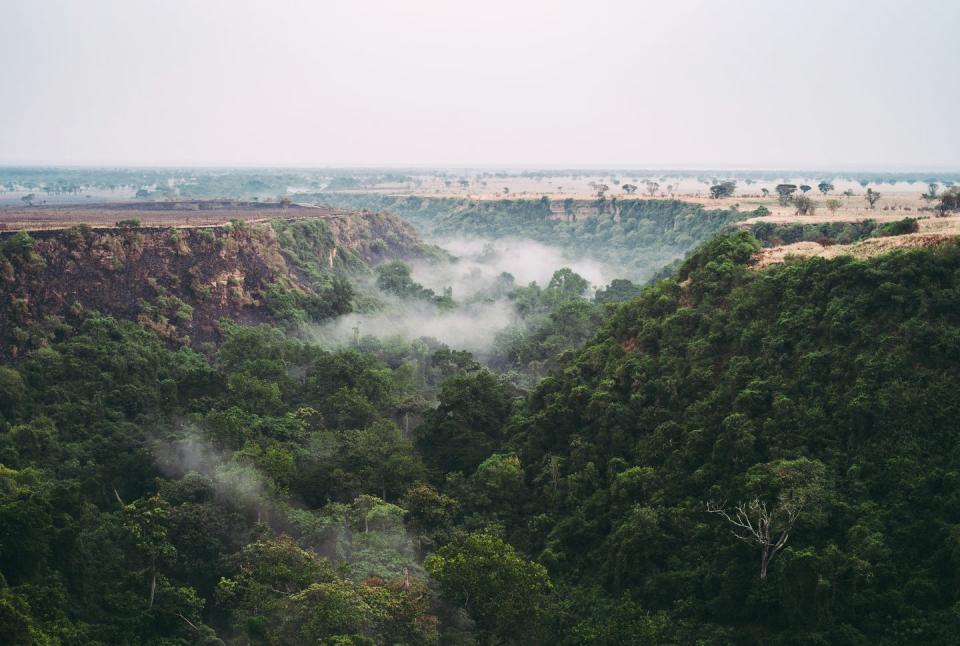
UGANDA
Balancing Act
Deep in Uganda’s Kyambura Gorge, a family of endangered chimpanzees struggles to survive. Can conscientious tourism help save them?
Visitors to the Kyambura Gorge often liken the prehistoric-feeling rain forest to Jurassic Park. The lush habitat, carved deep into the vast savanna of Uganda’s Queen Elizabeth National Park, feels otherworldly, with a mist-shrouded river running through the center, drawing hippos and elephants to its edge, while overhead, lions lounge in the trees. The gorge’s story—a family of stranded chimpanzees, a majestic sunken forest, and a battle to save a habitat—offers a compelling look at the role mindful tourism can play in conserving these rapidly disappearing, crucially important ecosystems.
Queen Elizabeth National Park is situated in the heart of the Albertine Rift, a biodiverse valley of forests, savannas, and waterways on the central-western edge of the country. It was once home to a robust population of big game animals, but under the rule of dictator Idi Amin, following a coup d’etat in 1971, the country plunged into a decline that opened the door for poaching, ivory trading, and rampant deforestation. This period was devastating not just for the citizens of Uganda, but for the ecosystem and wildlife, including the chimpanzees and their habitat.
Around 2000, as the country began to recover from the conflict, Praveen Moman, the Ugandan-born founder of ecotourism outfitter Volcanoes Safaris, had a nostalgic vision of restoring tourism in the region. “I grew up exploring the vast landscapes of this park, which at the time, were teeming with wildlife,” Moman remembers. He began acquiring sites to develop great ape tourism, including a plot of land that sat on the edge of the Kyambura Gorge, a lush, sunken rain forest measuring eight miles long and about half a mile wide that is home to a small family of 31 chimps, dubbed the “Lost Chimps of Kyambura.”
Years of human activity—both deforestation and encroachment from nearby
communities—have eliminated the forest corridors in part of the gorge that once allowed these chimps to safely cross the predator-laden savanna in search of mates and food. Tensions have run high between the basic needs of the people living on the border of the national park—water, firewood, fertile land for farming and grazing—and the health of the ecosystem and endangered apes. Moman knew that a thriving, responsible eco-
tourism industry, coupled with government efforts and local community support, could help relieve these tensions, with the potential to bring significant and needed revenue through tourist dollars, permit costs, and job creation.
Perched on the edge of the gorge, with breathtaking views, Volcanoes Safaris’ Kyambura Gorge Lodge opened in 2011 and embodies the outfitter’s authentic and relaxed brand of luxury. The company’s wide-ranging conservation initiatives, funded by tourist revenue, focus on developing alternatives to locals’ reliance on the gorge’s natural resources. This includes a land buyback program to create a buffer zone between the chimp’s habitat and the adjacent villages, a women-run coffee cooperative, a wetlands restoration project, and the construction of a community center in a local village.
“Because of the economic benefits of tourism, local communities now understand that the great apes are an asset,” explains Gladys Kalema-Zikusoka, Uganda’s first wildlife veterinarian and founder of the nonprofit Conservation Through Public Health. “When people are healthy and their basic needs are met, they are more likely to promote conservation.”
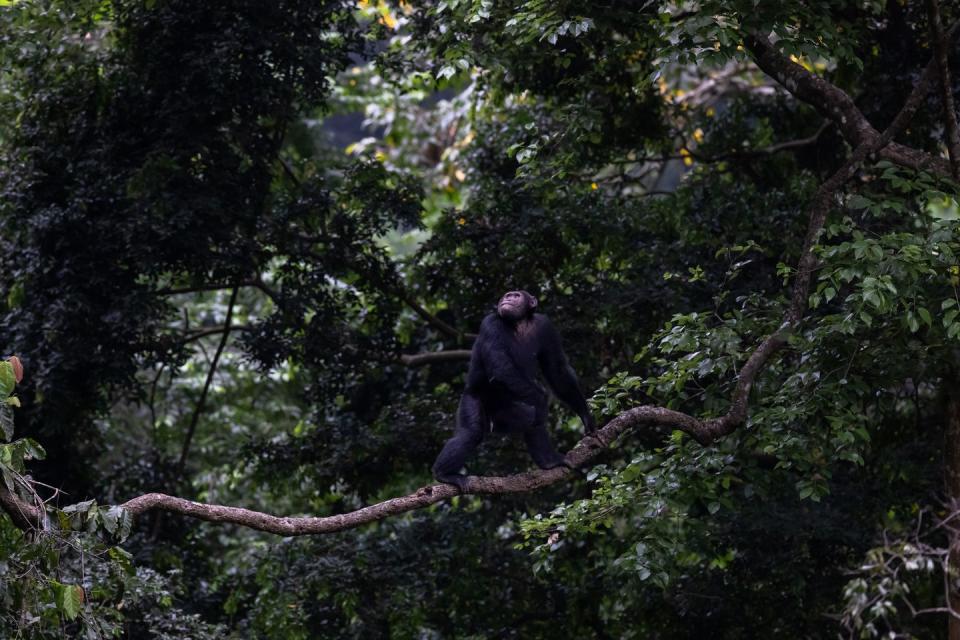
The ultimate goal here is to restore the forest corridors and link this community of stranded chimpanzees with the greater chimp population within Queen Elizabeth National Park, a lofty ambition that will require cooperation between the government, the local community, and tourism operators. Tourists often ask, Why go to all the trouble to protect this small family of chimpanzees? “This project offers a snapshot of the greater conservation challenges humanity faces,” Moman says. “Throughout the world’s greatest wilderness areas, we are losing species, losing habitat, while the surrounding communities become poorer. Here, we have a chance to do something.” And what they learn here from trying to save these “Lost Chimps” may help other species find their way into the future, too.
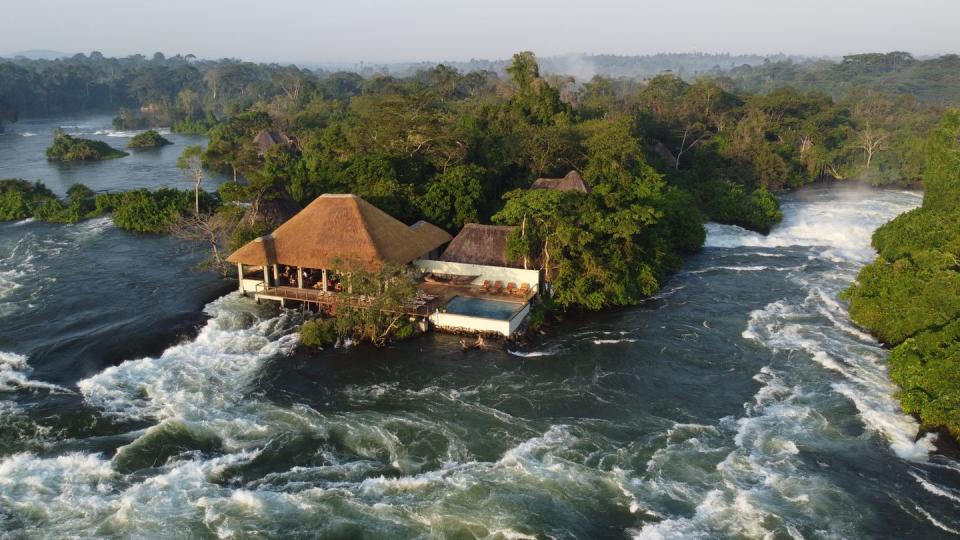
Choose Your Adventure
These distinctive destinations offer a variety of eco-friendly safari experiences.
This article appears in the May 2022 issue of ELLE.
You Might Also Like

